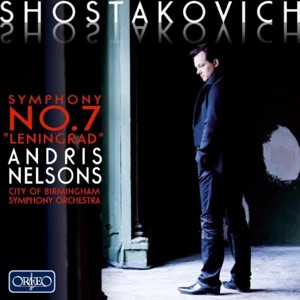Since Andris Nelsons will be remaking this symphony as part of the new Boston Shostakovich cycle, it makes sense to take a look at this earlier version to see what we might expect. As it turns out, this is a very, very good performance. It begins swiftly and decisively; the endless “Bolero” buildup in the first movement’s development section has the right feeling of inexorability, and the ensuing battle is appropriately crushing. If the latter stages of the movement go a bit slack, well, so they do in most performances.
The scherzo, too, moves at an unusually swift pace, all to the good, but the Adagio manages to be a true adagio, grave and emotionally true, without turning dull. Nelsons whips the finale up to a fine frenzy, and doesn’t deny the closing minutes their bombastic power. Throughout, the playing of the CBSO is very impressive in all departments, and the live sonics are terrific. So while we may look forward to the new Boston recording, there is absolutely no reason to believe that it will be better than this one. It is certainly worth considering on its own merits.
































